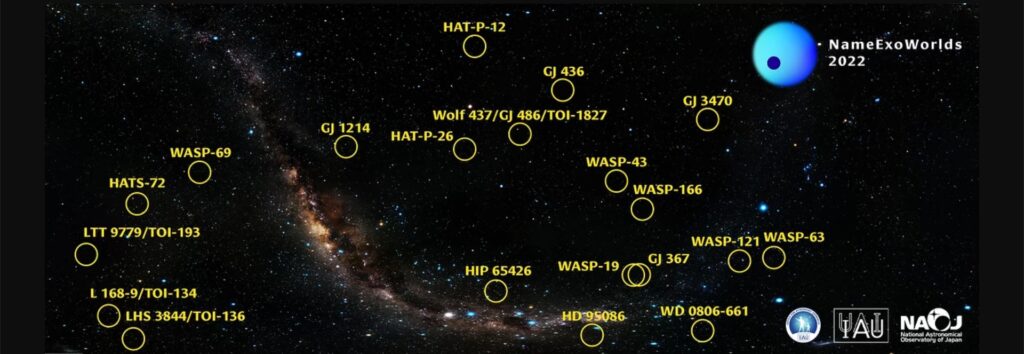The International Astronomical Union is holding a grand contest, which you can enter by forming a team and creating an event, to determine a name to submit for 20 “exomondes” targeted by the JWST.
Each planet, each star, each constellation has a name. This is one of the roles of the International Astronomical Union, or International Astronomical Union, abbreviated IAU. Regularly, the union organizes competitions allowing the community of professional astronomy, as well as amateurs, to propose names.
But the 2022 edition (dubbed NameExoWorld 2022) is special: it’s about naming 20 exoplanetary systems that are among the first targets of the James Webb Space Telescope (whose first snapshot offers the most detailed view ever obtained to date of the first ages of the Universe).
By ” exoplanetary system », it is necessary to hear a star + a planet (at least). Among these selected “exomondes”, there are WASP-19/WASP-19b, GJ_436/GJ_436b or even HIP_65426/HIP_65426b and LHS_3844 / TOI-136/LHS_3844b / TOI-136b. So, yes, you understand why it would need a name in addition to the scientific name.
What are the steps for submitting a name?
Who is the competition for? The IAU specifies that you can be a researcher in the field of exobiology, but also a professional astronomer, professor or student. The call is also addressed to amateur astronomers and enthusiasts. “ The competition seeks to bring together professional astronomers and the general public, giving them the opportunity to name 20 selected exoplanets with their host star », Specifies the IAU.

On the other hand, there is an important condition in terms of eligibility: the competition is open exclusively to teams. It is therefore necessary to bring together several people, from all these varied fields (but not necessarily one person from each field, this can be a professional, two students, or three amateurs and an astronomy teacher, etc.).
Next :
- It’s necessary “ organize an astronomy awareness event related to exoplanets » and choose a system among the 20 « exo-worlds » of the list. The event can be an online stream; posts on a dedicated account on social networks; a conference or round table, etc. (in any case, it will be necessary to describe all this and provide images).
- Then during this event, it is necessary to propose a name for the exoplanet and its host star ” in your language “, providing ” an explanation of the cultural context “.
- To officially propose the name found, one must fill out a complete form and also provide a video containing the explanation.
The form is a Google Form available by clicking on this link. The list of “exomonde” is available on the official website of the event. You have until November 11, 2022 to send this final proposal.
When will the final announcement take place?
Initially, there will be a first selection in each country, led by the members of the IAU National Outreach Coordinators, who will choose a single name as well as two others “ reserve “. Then, the international final selection committee, “ composed of members of the IAU working group and exoplanet discoverers “, will review the applications by determining the best names. ” These names will be selected based on the description and meaning of the names provided, as well as the outreach activities performed by each team », Specifies the IAU.
The final 20 exo-world names will be announced in March 2023. And, they will be recognized by the IAU as “the official name” for each exoplanetary system. This will of course be added to the scientific names of these systems, which are already determined.
You can take a look at the results of previous competitions to imagine more precisely what the final names look like.
